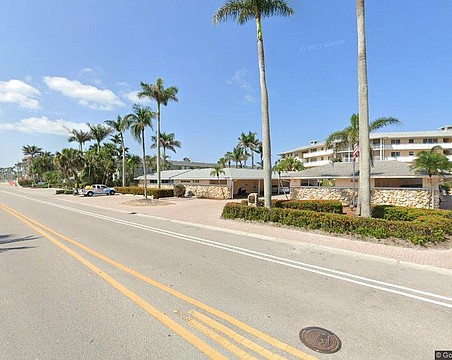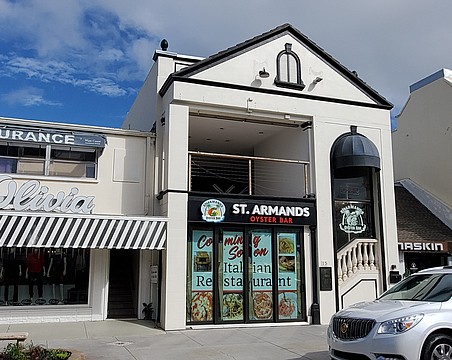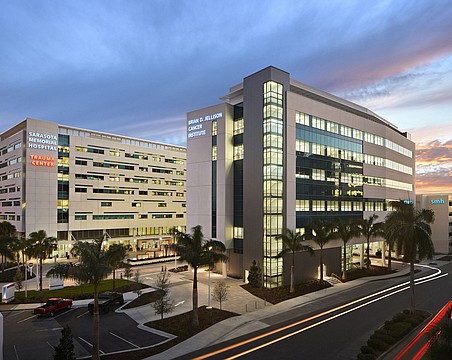Framing the Fight
Technology Innovation Awards - Sarasota/Manatee Winner by Mark Gordon | Managing Editor
After several business gyrations, Ken Sanborn thinks he's found his focus: Cameras that serve as life preservers for overseas soldiers.
Ken Sanborn is the epitome of someone who works in a field he loves: He's taken his two passions - flying helicopters and video photography - and turned them into a thriving technology-laden enterprise.
After several years of tinkering, research and trying other business lines, including one focusing on aerial films, Sanborn's Gyrocam Systems has found its niche, and many in the company believe, its calling.
The company has developed a camera that can be stabilized up to 30 feet above a vehicle to film the surrounding area in nearly any type of light or weather. Its Triple Sensor camera can rotate 360 degrees and combines high-resolution color, heat-sensitive thermal imaging and night vision to provide a trifecta of viewing opportunities.
The most popular and practical use for the product has been with U.S. military vehicles in Iraq and Afghanistan, to assist troops searching for hazardous situations, such as roadside bombs and Improvised Explosive Devices (IEDs), one of the highest causes of death in the country.
Sanborn, 53, says troops using the camera can look at a pile of debris or garbage from up to 200 yards away to detect an IED, a vast improvement over the old and dangerous method of having troops walk up to the location or use binoculars to spot the bomb.
Gyrocam has been recognized before for its efforts, mostly from grateful customers; an oversized picture of four armed and camouflaged soldiers in Iraq wearing Gyrocam hats hangs in the lobby of the company's headquarters, just outside the Sarasota Bradenton International Airport.
A presidential visit
More recognition came last month when President George W. Bush toured the company during a visit to campaign for local congressional candidate Vern Buchanan. Bush praised the company's entrepreneurial spirit, in addition to thanking it for making "an IED detector that enables our troops to be able to ferret out an IED before they come across it."
The money people within the military have recognized Gyrocam, too, in the form of two contracts worth $94 million for about 200 cameras this year. The jobs include delivery and field support in Iraq. Company vice president Joe Stark, a partner with Sanborn on other projects and a retired Army official, spent three months in Kuwait and Iraq last year monitoring the cameras.
The contracts are fostering a growth spurt for the company. Gyrocam has leased a few more acres from the airport with plans to add to its 30,000-square-foot facility and it also intends to double its workforce to about 100 people over the next year.
Gyrocam has undergone several transformations since Sanborn formed his first company in the early 1990s. He declined to release revenues for previous years, but a majority of funding and overhead as been provided by an Australian investment group that has partnered with Sanborn for the past three years.
That backing has led Sanborn and his team of electrical engineers and technicians to devise systems where the camera's proprietary technology has been used by the military in ways Sanborn initially hadn't thought off. Up next for the company is research and development into putting its multi-sensor gryostabilized cameras onto Navy ships and military planes.
Sanborn says the recognition and contracts present a double challenge: He has to sell products and increase revenues to sustain the operation, the employees and propel growth. But he also believes he has a higher calling to make a useful, life-saving product. "We're not just building doorstops here," says Sanborn. "We're building something that at the end of the day, helps saves soldiers' lives."
Chasing TV news
In Sanborn's first career, he would be much more likely to be behind a camera taking videotape coverage of soldiers than selling high-tech cameras to them.
The son of a commercial pilot who also owned a cable TV station in Lakeland, Sanborn got an early start to his career by hanging around his father and others in the industry. His first job was as a reporter-cameraman for WFLA in Tampa.
Sanborn went on to work in the New York City area, where he worked for ABC News and the channel's 20/20 program for about 10 years, starting in 1977. He worked with Hugh Downs and Barbara Walters and was behind the camera for several famous interviews, including one with Libyan leader Muammar al-Gaddafi.
Seeking a new challenge, Sanborn decided to try aerial photography in the early '90s. He would freelance his services and either fly himself or a pilot would fly him over newsworthy events, such as the Super Bowl, to take footage. That endeavor would ultimately lead to Aerial Films, a company he formed that shot high-end video for commercials and other short films.
But when Sanborn started out, the technology didn't match his ambition. The gyrostbailized cameras on the market were riddled with problems and untimely malfunctions. Sanborn recalls before the 1991 Super Bowl, when there were problems with the camera, the manufacturer told him it could fix it on Monday - the day after the game.
Frustrated, Sanborn began researching a way to get a camera to hold steady on a helicopter as it flew. Too many shakes and jitters and the picture was blurry. He succeeded, and his innovation spawned a new generation of TV news: The aerial shot, made famous in 1994 during the O.J. Simpson police chase.
Sanborn and his team built the gyro-stabilized camera into helicopters for several TV stations in the 1990s, including ones in New York, Los Angeles, Philadelphia and Detroit.
In the Army now
But that helicopter-television market had low-growth potential and Aerial Films slowed as well, especially after 9/11. Around that time, Sanborn says he also realized something else: "We found that law enforcement didn't have the technology," he says. "TV stations had better access to the technology."
So the business changed again, focusing on investigative and law enforcement agencies. Sanborn moved the operation to Sarasota in 2000 and renamed the company Gyrocam Systems in 2003, showcasing the change. Jagen Investments Pty Ltd., a billion dollar Australian private equity firm, also bought a large stake in the company; two Jagen officials have since served on Gyrocam's board of directors.
Initial clients included the Tampa Police Department, the Polk County Sheriff's Office and the Pennsylvania State Police. Those agencies used the gyro-stabilized cameras mounted on helicopters to read license plates from as far as a mile away and conduct nighttime surveillance. Since then, the federal Drug Enforcement Agency has become one of the company's largest clients and its sales force is wooing other federal agencies, such as the Secret Service and the FBI.
The last three years have seen the company shift its focus again, this time to the military. Sanborn went that way after attending an industry conference in Washington D.C., where he heard the military was looking for a way to detect roadside hazards from the air.
Sanborn's initial thought was to scrap the air and put the systems directly on the trucks. Some in the military were skeptical, but Gyrocam went ahead, mounting a prototype of its camera on an SUV in 2003. A year-and-half of testing later, the company had its first contract from the Army to produce Gyrocam Systems cameras for use in Iraq.
A Visit from the Commander-in-chief
President George W. Bush toured the Gyrocam Systems facility at the Sarasota Bradenton International Airport Oct. 24 after a stop to campaign for congressional candidate Vern Buchanan. He was introduced to company employees and was given a tour by company founder and president Ken Sanborn. Here are excerpts from a speech Bush gave to reporters:
"The other thing that's interesting about this little company is one of the products they make is an IED detector. And I've been saying to the American people that our goal in Iraq has not changed, which is a country that can sustain itself, defend itself, govern itself. Our tactics are adjusting. And one of the adjustments we had to make in order to protect lives and achieve our mission was to better detect IEDs. And this little company right here makes an IED detector that enables our troops to be able to ferret out an IED before they come across it.
"And one of the interesting things I was able to do was talk to a couple of Iraq vets who now work for this company. They're bringing their expertise off the battlefield to help this company design a product which will work. Interestingly enough, they then send people back to maintain the detectors."





